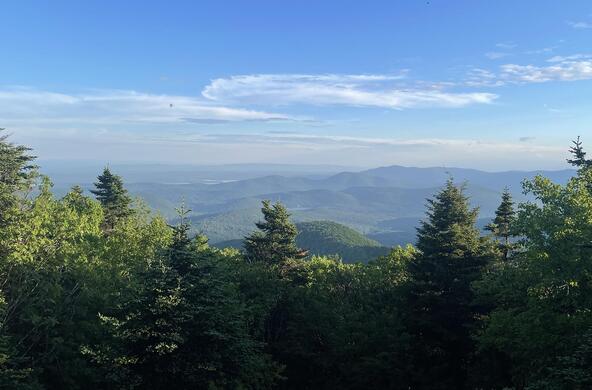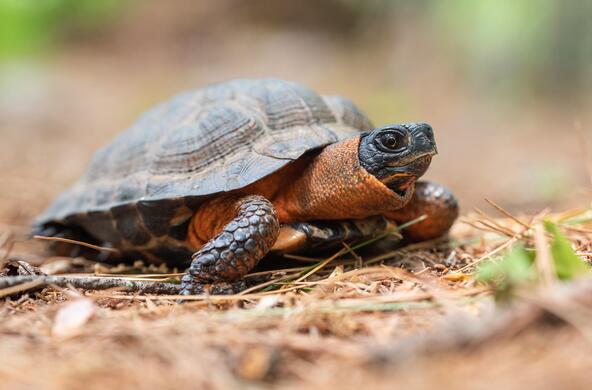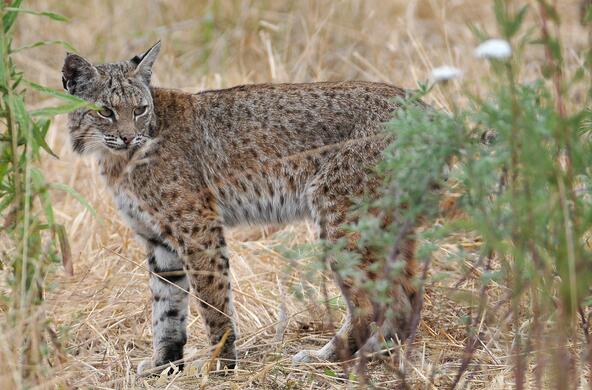It's easy to feel light-deprived during these short, pale winter days, especially after a week of gray weather. Compared to many underwater habitats, though, a cloudy winter's day is a floodlit paradise.
Water, especially if it is impure, absorbs so much light that you don't have to descend very far into a lake or river to reach twilight and then darkness. The clearest local waters are lakes like Awosting in the Shawangunks, which contain few impurities. Even in these lakes, only about 1 percent of the sunlight reaches a depth of 40 feet.
But there are much darker places.
Most local lakes and rivers contain suspended mud or dissolved organic matter (a natural tea that is steeped from leaves and soils) that absorb light, and are far darker than Awosting. For perspective, an overcast, moonless night is about one-billionth as bright as a sunny day. However, the bottom of the Hudson at Poughkeepsie, under 60 feet of muddy water, gets about one-billionth of one-billionth of the sunlight that shines on the river's surface, engulfing that habitat in a profound and perpetual darkness.
The bottom of the Hudson is not the only dark underwater habitat. Although clear ice is about as transparent as water, ice that is filled with bubbles or covered with snow can block more than 99 percent of sunlight from reaching the water beneath, so it is very dark under thick, snow-covered ice. And caves and aquifers are completely dark.
As you can appreciate, living where the sun doesn't shine poses challenges for aquatic life. To begin with, how do you find anything? (Like the food that you want to eat or the predator that wants to eat you?) Most humans are so visual that it's hard for us to imagine getting around where it's pitch black.
But there are senses other than sight, and they are well-developed in many aquatic animals. Some have finely honed senses of smell they use to find food and avoid danger. Fish have a lateral line, an exquisitely sensitive system for detecting vibrations in the water. Electric eels, elephant fish, and quite a few others use electric fields to sense prey and predators, or communicate with one another. So animals adapted to living in the dark manage just fine.
A more basic problem is where food comes from in the first place. Except in a few special habitats like deep-sea vents, photosynthesis fueled by sunlight provides all of the food that supports food webs. So these dark corners of the world can't grow their own food, but instead depend on food that is carried in from some well-lit habitat.
This journey may be surprisingly long. You could probably guess that some of the food that feeds the animals on the bottom of the Hudson comes from phytoplankton carried down from the upper, sunlit parts of the river. But even more of that food comes from bits of leaves and soil washed in from distant parts of the watershed, and some of that material is thousands of years old. This means that creatures in the Hudson are feeding today on sunlight that was captured by photosynthesis when Jesus was alive.
Ground waters offer an even more amazing example. Some of the food that feeds groundwater bacteria and animals is carried in with the water that seeps through overlying soils, and is only weeks to months old. But part of their food was made on some sunny day millions or even hundreds of millions of years ago, and then locked into the rocks that form the aquifer until it was consumed today. And you thought aged cheese was old!
But even though much underwater life manages without light, turning light habitats dark can kill. When soil erosion or algal blooms turn clear water turbid, there is too little light to support underwater plants, and they and all of the animals that depend on them disappear. And when snow-covered ice covers a lake and prevents photosynthesis for a long time, the animals in the lake can use up all of the oxygen and die, which is called "winterkill."
I doubt that anyone enjoys these gray winter days. But unless you've spent time at the bottom of the Hudson, you don't know what dark is.








